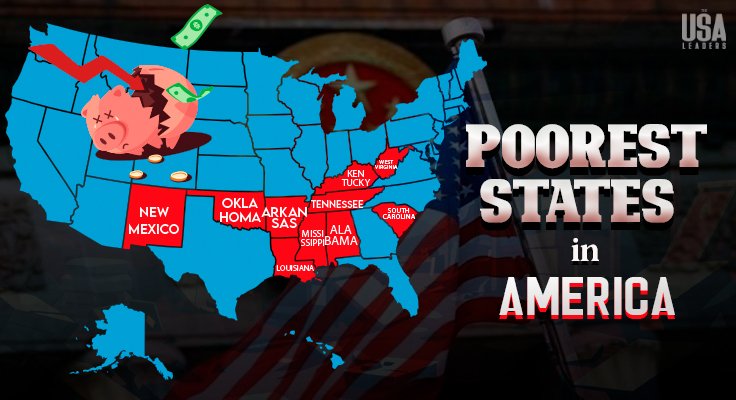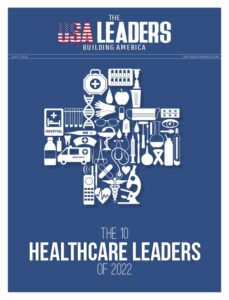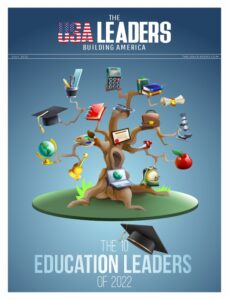Have you ever wondered why the poverty in America seems to struggle more than others? What factors contribute to the high poverty rates in these states? You’re in the right place, if you’re curious about the elements affecting the poorest states in America.
By reading this blog, you’ll gain a deeper understanding of the socio-economic realities in America’s poorest states. Moreover, you’ll discover how factors like education, industry dependence, and historical context contribute to their high poverty rates.
In this blog, we’ll explore the poorest states in America that stretch far and wide. So, let’s begin!
1. Mississippi
- Poverty Rates: 19.2%
- Estimated population: 2.94 million
Mississippi often tops the list of the poorest states in America. The state has a complex history and faces several challenges to its current economic status. Unfortunately, the Mississippi Delta, once the headquarters of American slavery, is a significant factor in the state’s poverty.
Beyond that, Mississippi’s economy is heavily dependent on agriculture, manufacturing, and healthcare. Even though these industries create jobs, their pay is frequently lower than other sectors. Consequently, the state’s citizens will earn less money overall. Mississippi also has the lowest median household income of any state at $44,966.
Educational attainment plays a crucial role in securing good-paying jobs. Unfortunately, the state has a lower graduation rate than the national average. As of 2024, Mississippi has a literacy rate of 72%, indicating approximately 28% of the state’s population lacks basic literacy skills.
2. Louisiana
- Poverty Rates: 18.65%
- Estimated population: 4.57 million
Louisiana, another one of the poorest states in America, has a unique blend of vibrant culture and significant economic challenges. Louisiana’s history is based on racial discrimination and economic disparity. Thus, the range of Louisiana’s average wage as of 2024 is $52,306 to $102,000.
Moreover, the state’s economy depends on industries like oil and gas, fishing, and tourism. However, these industries are often subject to fluctuations in global markets and environmental disasters, leading to economic instability.
In addition, the state education system faces significant challenges, with the state often ranking low in national education rankings. It limits opportunities for high-paying jobs, perpetuating the cycle of poverty. As such, Louisiana’s literacy rate as of 2024 is 27.1%, meaning over 72.9% of the state’s population lacks basic literacy abilities.
3. New Mexico
- Poverty Rates: 18.55%
- Estimated population: 2.11 million
According to research, New Mexico frequently has one of the highest percentages of the poorest states in America. Many jobs in the state offer wages below $12 an hour, making it difficult for families to make ends meet. As such, it creates a situation where people work but still struggle financially.
Moreover, New Mexico has lower educational attainment rates than the national average. This can limit job opportunities and earning potential. In 2024, the literacy rate in New Mexico was 38%, and around 62% of the state’s people lacked basic literacy abilities.
The cost of living, particularly housing, has been rising in New Mexico, further straining low-income families. The average home value in New Mexico is $303,286. Poverty is more concentrated in rural areas, where access to resources and job opportunities may be more limited.
4. West Virginia
- Poverty Rates: 17.10%
- Estimated population: 1.77 million
West Virginia consistently ranks among the poorest states in the US. The state’s economy has historically relied heavily on coal mining. Consequently, the decline of the coal industry has resulted in job losses and decreased tax revenue for the state.
Beyond that, the state has one of the lowest percentages of residents with bachelor’s degrees, which limits opportunities for higher-paying jobs. Many young people leave the state seeking better job prospects elsewhere. Moreover, West Virginia’s average annual wage as of 2024 ranges from $49,1701 to $77,8144.
Furthermore, the state’s rocky geography can make infrastructure development and attracting new businesses more difficult. However, initiatives are in progress to restore the West Virginia economy. These include promoting tourism, attracting new industries like technology and renewable energy, and investing in education and infrastructure.
5. Kentucky
- Poverty Rates: 16.61%
- Estimated population: 4.54 million
Manufacturing has always been a major element of Kentucky’s economy, especially coal mining and auto manufacturing. As these industries decline, good-paying jobs become scarce. Many Kentuckians are thus having difficulty finding employment that pays a livable salary.
Furthermore, Kentucky has one of the lowest minimum wages in the country. The state average wage is $42,000, while Massachusetts has the highest average salary at $76,600. This makes it harder for full-time workers to lift themselves and their families out of poverty.
Additionally, some argue that Kentucky may not have as extensive social safety net programs. This may reduce the resources available to communities to help them escape poverty. With a 78.1% literacy rate, almost 21.9% of people in Kentucky do not have basic reading and writing skills.
6. Arkansas
- Poverty Rates: 16.08%
- Estimated population: 3.07 million
Arkansas has a rich cultural heritage but faces several socioeconomic challenges. Poultry raising and other agricultural products is a major industry in the state. However, these sectors frequently experience natural disasters and changes in international markets, which cause financial instability. Thus, the state is often listed among the poorest states in America.
Moreover, the state has inadequate access to employment opportunities due to the low literacy rate. In 2024, the literacy rate in Arkansas is 38%, and over 62% of the population lacks basic literacy competencies. This is often traced back to the labor market and stands among the poorest states in America.
The state’s geographical and climatic impacts the economy and quality of life. Despite these challenges, Arkansas is known for its beautiful vibrant culture. Efforts are also ongoing to address these issues and improve the state’s economy and quality of life for its residents.
7. Alabama
- Poverty Rates: 15.98%
- Estimated population: 5.1 million
Alabama’s economy was reliant on slave labor for cotton production. After emancipation, the shift to a free market left many Black families without land or resources. Consequently, segregation and discriminatory policies further limited economic mobility for generations.
The state’s economic development strategy focused on attracting low-skill, low-wage industries like textiles. While this initially brought jobs, it didn’t offer pathways to higher wages or economic security. Globalization and automation have also led to job losses in these sectors.
In addition, the educational system also faces challenges that could hinder the opportunities available to the state’s citizens. 14.8% of its people do not have basic literacy abilities. Plus, a large amount of the state’s tax structure is made up of sales taxes, which negatively affect those with lower incomes.
8. Oklahoma
- Poverty Rates: 15.27%
- Estimated population: 4.08 million
Many jobs in Oklahoma fall short of providing a living wage. Even with full-time employment, people struggle to make ends meet. The public school system faces funding challenges, impacting the quality of education. Moreover, the average pay ranges from $41,6671 to $69,2114, and the state has a 79.9% literacy rate.
Poverty is also linked to poor health outcomes. Thus, rural areas in Oklahoma often face limited access to high-paying jobs, educational resources, and healthcare facilities. As a result, this state is among the poorest states in America, and its remoteness traps individuals.
Above all, poverty is a complex issue with no single solution. However, addressing these factors through better educational opportunities, job training programs, and social support systems can create a path forward for Oklahoma and other states facing similar challenges.
9. South Carolina
- Poverty Rates: 14.68%
- Estimated population: 5.46 million
South Carolina consistently ranks high in the poorest states in America. In South Carolina, many jobs do not pay enough to cover basic needs, especially in service sectors such as tourism and hospitality. This makes it difficult for families to climb out of poverty.
Importantly, the education system has potentially influenced South Carolina. It has a literacy rate of 85%. However, the state confronts difficulties in funding public education and obtaining high-quality educational resources.
Furthermore, the cost of housing, healthcare, and other necessities rises while state earnings remain static. Thus, it impacts household finances causes some families to fall into poverty, and makes it more difficult to obtain and find a job.
10. Tennessee
- Poverty Rates: 14.62%
- Estimated population: 7.1 million
Statistics show a correlation between education level and poverty rates. While educational attainment in Tennessee has improved, there’s still a gap compared to the national average. This can limit job prospects and earning potential.
Besides that, the state is generally lower than the national average, and the cost of living can vary significantly within Tennessee. Poverty rates tend to be higher in rural areas of the state. These areas often have limited access to quality education, healthcare, and job opportunities.
Above all, Tennessee can strive to create a more equitable future for all its residents. Programs that provide job training and education can equip residents with the skills needed for higher-paying jobs. Moreover, with a 68% literacy rate, over 32% of Tennesseeans are not proficient in the fundamentals of literacy.
Final Thought
We explored the poorest states in America and learned that poverty is deeply intertwined with factors like education, industry, and history. Consequently, each state shares unique and common challenges that contribute to its high poverty rates. However, by understanding the historical and economic factors at play, we can work towards creating a more equitable future.
Above all, what can we do to address poverty in these states? How can we ensure that everyone, regardless of where they live, has access to quality education, good-paying jobs, and a decent standard of living? These are questions that require our collective thought and action. Thanks for reading!
Also Read; Richest States in America [Updated 2024]






















